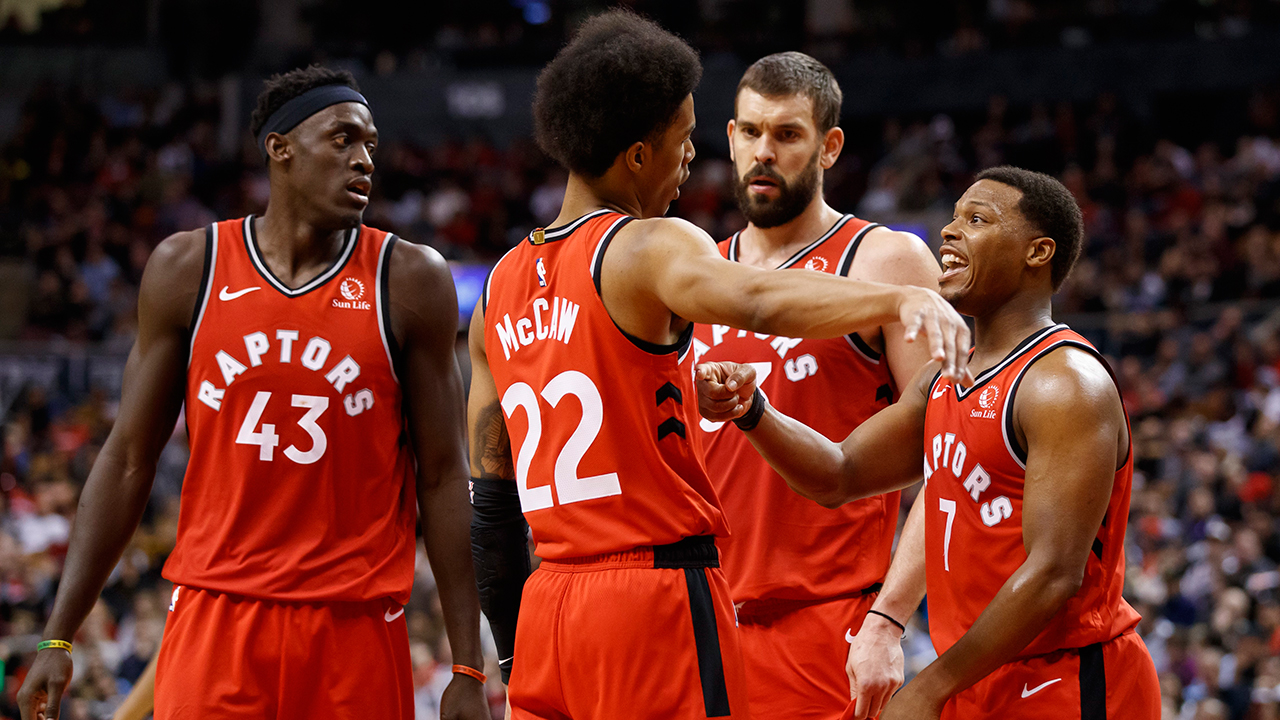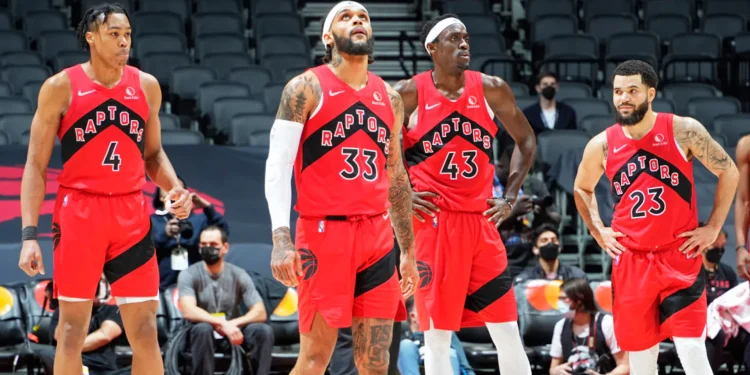In a twist of fate, the Toronto Raptors find themselves grappling with the aftermath of what can only be described as the worst-case scenario following the NBA Draft Lottery. After a challenging season that saw them finish with a 25-57 record, the Toronto Raptors were in line for a high draft pick, one that could have been a cornerstone for rebuilding. However, due to a previous trade agreement, their pick slipped from sixth to eighth and now belongs to the San Antonio Spurs.
This outcome is not just a temporary setback but a scenario that could affect the team’s strategy for the next few years.

The trade involved a top-six protected pick for Jakob Poeltl, a decision that, while seemingly prudent at the time, has now backfired by leaving the Toronto Raptors without a high pick in a year where they desperately needed it.
Toronto Raptors: The Ongoing Ripple Effects
The absence of this year’s high lottery pick is compounded by the team’s historical context. Toronto’s luck in the draft has been notably mixed, with the 2021 acquisition of Scottie Barnes during the “Tampa Tank” season standing out as a recent success.
Unfortunately, this year they are relegated to the 19th and 31st picks, acquired through trading Pascal Siakam as part of a broader rebuilding strategy. This scenario starkly highlights the challenges of finding game-changing talent later in the draft
Jakob Poeltl’s performance this past season did provide some solace. His effective play helped stabilize the team during a turbulent season marked by injuries and absences, including his own. Yet, his impact only magnifies what the Toronto Raptors have lost in terms of draft potential, underscoring the critical nature of high lottery picks in the team’s quest for top-tier talent.

Strategic Challenges and Silver Linings
Despite the setback, there are strategic benefits moving forward. The conveyance of this year’s pick to the Spurs frees up the Toronto Raptors from future draft pick obligations, allowing them greater flexibility in trade discussions and financial management.
This clearer asset-management situation could facilitate more aggressive moves in the trade and free agency markets to bolster the roster.
However, the Toronto Raptors’ path to regaining competitiveness in the Eastern Conference hinges on several variables. Health will play a critical role, as the team’s performance next season could improve significantly if key players like Barnes and Poeltl remain injury-free. Yet, the possibility of securing a game-changing draft pick next year remains uncertain, particularly given the unpredictable nature of the lottery.
The NBA Draft Lottery outcome was probably the worst-case scenario for the Raptors as they try to be competitive long-term in the Eastern Conference. @michaelgrange explains why. https://t.co/HyodN2XiIN
— Sportsnet (@Sportsnet) May 12, 2024
A Look Ahead
The Toronto Raptors’ front office, led by Masai Ujiri, faces the daunting task of navigating these challenges. The team’s strategy will likely focus on leveraging their existing assets to build a competitive roster while keeping an eye on potential future draft opportunities. The goal will be to create a sustainable path back to contention without relying solely on lottery luck.

The Toronto Raptors’ situation is a poignant reminder of the high stakes in NBA draft strategies and the thin margins between success and setback in team rebuilding efforts.
As the Toronto Raptors look to the future, they must balance immediate needs with long-term goals, a task complicated by past decisions but not insurmountable with smart management and a bit of future fortune.










